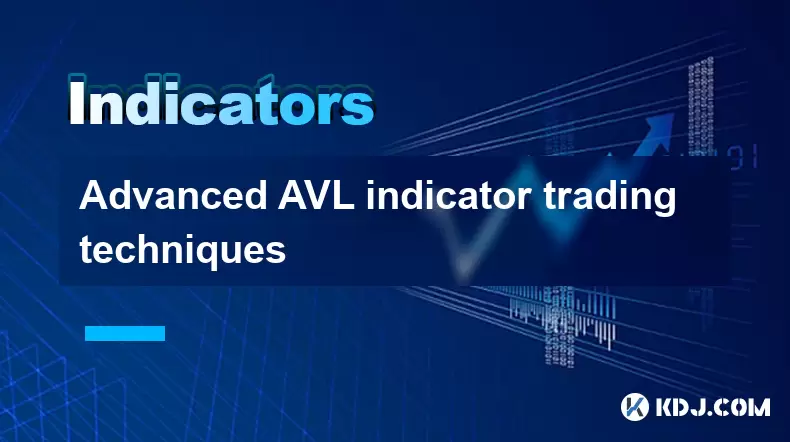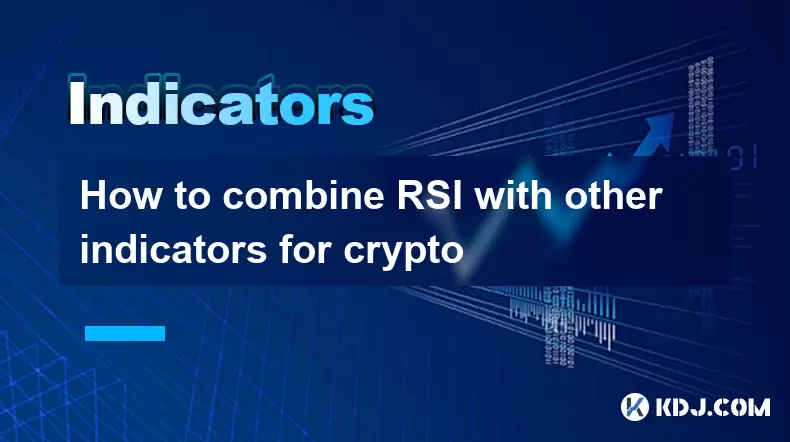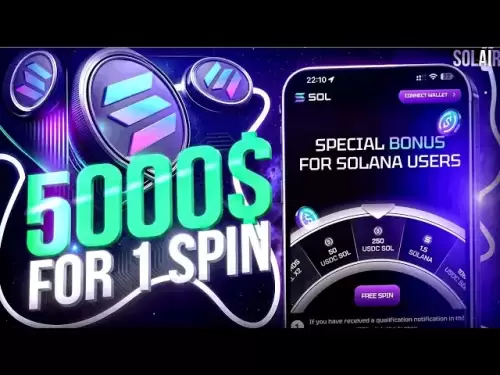-
 Bitcoin
Bitcoin $121,528.0299
2.98% -
 Ethereum
Ethereum $3,068.2796
3.56% -
 XRP
XRP $2.9875
7.26% -
 Tether USDt
Tether USDt $1.0001
-0.01% -
 BNB
BNB $704.3033
2.01% -
 Solana
Solana $166.8292
2.88% -
 USDC
USDC $0.9998
0.00% -
 Dogecoin
Dogecoin $0.2063
3.87% -
 TRON
TRON $0.3027
-0.01% -
 Cardano
Cardano $0.7480
2.62% -
 Hyperliquid
Hyperliquid $48.3868
0.88% -
 Stellar
Stellar $0.4534
6.74% -
 Sui
Sui $3.9316
14.29% -
 Chainlink
Chainlink $16.2437
5.70% -
 Bitcoin Cash
Bitcoin Cash $513.4177
1.89% -
 Hedera
Hedera $0.2398
4.90% -
 Avalanche
Avalanche $21.7489
2.41% -
 UNUS SED LEO
UNUS SED LEO $9.0122
-0.22% -
 Shiba Inu
Shiba Inu $0.0...01375
3.85% -
 Toncoin
Toncoin $3.0263
0.37% -
 Litecoin
Litecoin $97.1823
2.52% -
 Polkadot
Polkadot $4.1006
3.53% -
 Monero
Monero $350.5690
4.05% -
 Uniswap
Uniswap $9.5209
12.39% -
 Dai
Dai $0.9997
-0.03% -
 Ethena USDe
Ethena USDe $1.0003
-0.04% -
 Pepe
Pepe $0.0...01257
2.00% -
 Bitget Token
Bitget Token $4.4824
2.65% -
 Aave
Aave $325.5161
7.61% -
 Bittensor
Bittensor $418.6689
6.29%
Advanced AVL indicator trading techniques
The AVL indicator helps traders analyze buying and selling pressure in crypto markets by tracking order flow, offering insights into potential trend reversals or continuations when combined with price action and divergence patterns.
Jul 14, 2025 at 11:56 am

Understanding the Basics of the AVL Indicator
The AVL (Advanced Volume Liquidity) indicator is a technical analysis tool used in cryptocurrency trading to assess volume and liquidity dynamics. Unlike standard volume indicators, AVL provides insights into both buying and selling pressure by analyzing order flow. This allows traders to identify potential reversals or continuations in price trends. The core functionality of the AVL indicator lies in its ability to differentiate between aggressive buy and sell orders, which helps in predicting market sentiment.
In most charting platforms, the AVL indicator appears as a histogram with two colors—typically green for bullish pressure and red for bearish pressure. A rising green bar suggests that buyers are more aggressive, while an increasing red bar indicates strong selling activity. Traders can use this information to time their entries and exits more effectively. Understanding how the AVL indicator responds to different market conditions is crucial before applying advanced techniques.
Combining AVL with Price Action for Better Entries
One of the most effective ways to enhance your trading strategy using the AVL indicator is to combine it with price action signals. For example, when a cryptocurrency pair forms a bullish engulfing pattern on a candlestick chart and the AVL indicator shows a surge in green bars, this confirms the strength behind the move. Similarly, if a resistance level is being tested and the AVL indicator displays strong red bars, it may indicate that the resistance will hold.
To apply this technique:
- Identify key support and resistance levels.
- Look for confluence between AVL readings and candlestick patterns.
- Enter trades only when both price action and AVL signals align.
- Set stop losses just beyond recent swing highs or lows.
- Monitor AVL divergence during the trade for early exit signals.
This method increases the probability of successful trades by filtering out false breakouts and confirming genuine momentum shifts.
Using Divergence to Spot Reversals
Divergence occurs when the price of a cryptocurrency moves in one direction while the AVL indicator moves in the opposite direction. This often signals a weakening trend and potential reversal. AVL divergence can be either bullish or bearish:
- Bullish divergence: Price makes a lower low, but AVL makes a higher low, indicating increasing buying pressure despite falling prices.
- Bearish divergence: Price makes a higher high, but AVL makes a lower high, suggesting waning buying interest.
To detect AVL divergence:
- Use a clean chart without excessive indicators.
- Compare price swings with corresponding AVL peaks and troughs.
- Draw trendlines on both price and AVL to visualize divergences clearly.
- Confirm with other tools like RSI or MACD if necessary.
- Watch for volume spikes that coincide with divergence signs.
This technique is especially useful in identifying tops and bottoms in volatile crypto markets where momentum changes rapidly.
Filtering Noise with Moving Averages on AVL
Since the AVL indicator can sometimes produce erratic readings due to sudden bursts of volume, applying a moving average to smooth out the data can improve signal accuracy. Adding a simple moving average (SMA) or exponential moving average (EMA) to the AVL histogram can help filter out false signals and highlight dominant market direction.
Steps to implement this:
- Apply the AVL indicator to your chart.
- Add a 5-period EMA over the AVL histogram.
- Observe when the AVL bars cross above or below the EMA line.
- Use crossovers as entry or exit triggers.
- Adjust EMA period based on your trading timeframe.
For instance, when AVL crosses above its EMA, it may signal strengthening bullish momentum, whereas a cross below could indicate increasing bearish control. This method works well in trending markets where noise reduction enhances decision-making.
Backtesting AVL Strategies for Consistency
Before deploying any AVL-based trading strategy in live markets, it's essential to backtest it thoroughly. Backtesting involves applying your strategy to historical data to evaluate its performance under various market conditions. This process helps you understand how reliable AVL signals are in different scenarios.
To conduct effective backtesting:
- Choose a cryptocurrency pair with sufficient historical data.
- Define clear entry and exit rules based on AVL signals.
- Use charting software that supports strategy testing (e.g., TradingView).
- Run tests across multiple timeframes (1H, 4H, daily).
- Record win rate, risk-reward ratio, and drawdown metrics.
You may find that certain AVL strategies perform better during high volatility periods, such as major news events or macroeconomic announcements. Others might work best in sideways or consolidating markets. By analyzing results, you can refine your approach and avoid emotional trading decisions.
Frequently Asked Questions
Q: Can the AVL indicator be used on all cryptocurrency pairs?
Yes, the AVL indicator can be applied to any cryptocurrency pair available on your trading platform. However, its effectiveness may vary depending on liquidity and trading volume. Pairs with higher volume tend to produce clearer and more actionable AVL signals.
Q: How does AVL differ from OBV (On-Balance Volume)?
While both indicators measure volume-related aspects, the AVL indicator distinguishes between buying and selling pressure by analyzing order flow, whereas OBV simply accumulates volume on up days and subtracts it on down days. This makes AVL more dynamic and responsive to real-time market behavior.
Q: Is the AVL indicator suitable for scalping?
The AVL indicator can be adapted for scalping strategies, especially when combined with tight timeframes like 1-minute or 5-minute charts. However, due to rapid fluctuations in volume, scalpers should use additional filters such as EMAs or volatility measures to avoid whipsaws.
Q: Should I rely solely on AVL for making trading decisions?
No single indicator should be used in isolation. While the AVL indicator offers valuable insights into volume and liquidity, combining it with price action, trend lines, and possibly other oscillators like RSI or Stochastic improves overall accuracy and reduces false signals.
Disclaimer:info@kdj.com
The information provided is not trading advice. kdj.com does not assume any responsibility for any investments made based on the information provided in this article. Cryptocurrencies are highly volatile and it is highly recommended that you invest with caution after thorough research!
If you believe that the content used on this website infringes your copyright, please contact us immediately (info@kdj.com) and we will delete it promptly.
- Smokin' Crypto Tokens: Riding the Wave of New Tech and Big Money
- 2025-07-14 18:50:12
- Crypto Presale Heats Up: BlockchainFX Aims to Outpace Shiba Inu, Challenging Binance
- 2025-07-14 19:30:11
- Meme Coin Mania: Your Step-by-Step Guide to Viral Success in 2025
- 2025-07-14 18:00:36
- UK Treasury Watch: Bitcoin Surge Lifts Companies Amidst Crypto Optimism
- 2025-07-14 16:30:12
- Crypto Investment Beyond XRP: Unearthing High-Potential Substitutes
- 2025-07-14 18:10:12
- Satoshi Nakamoto: Bitcoin's Billionaire Mystery – Richest Person?
- 2025-07-14 16:50:12
Related knowledge

Advanced RSI strategies for crypto
Jul 13,2025 at 11:01am
Understanding the Basics of RSI in Cryptocurrency TradingThe Relative Strength Index (RSI) is a momentum oscillator used to measure the speed and chan...

Crypto RSI for day trading
Jul 12,2025 at 11:14am
Understanding RSI in the Context of Cryptocurrency TradingThe Relative Strength Index (RSI) is a momentum oscillator used to measure the speed and cha...

Crypto RSI for scalping
Jul 12,2025 at 11:00pm
Understanding RSI in the Context of Crypto TradingThe Relative Strength Index (RSI) is a momentum oscillator widely used by traders to measure the spe...

What does an RSI of 70 mean in crypto
Jul 13,2025 at 06:07pm
Understanding the RSI Indicator in Cryptocurrency TradingThe Relative Strength Index (RSI) is a widely used technical analysis tool that helps traders...

How to avoid RSI false signals in crypto
Jul 13,2025 at 06:21pm
Understanding RSI and Its Role in Crypto TradingThe Relative Strength Index (RSI) is a momentum oscillator used to measure the speed and change of pri...

How to combine RSI with other indicators for crypto
Jul 12,2025 at 08:35am
Understanding the Role of RSI in Crypto TradingThe Relative Strength Index (RSI) is a momentum oscillator that measures the speed and change of price ...

Advanced RSI strategies for crypto
Jul 13,2025 at 11:01am
Understanding the Basics of RSI in Cryptocurrency TradingThe Relative Strength Index (RSI) is a momentum oscillator used to measure the speed and chan...

Crypto RSI for day trading
Jul 12,2025 at 11:14am
Understanding RSI in the Context of Cryptocurrency TradingThe Relative Strength Index (RSI) is a momentum oscillator used to measure the speed and cha...

Crypto RSI for scalping
Jul 12,2025 at 11:00pm
Understanding RSI in the Context of Crypto TradingThe Relative Strength Index (RSI) is a momentum oscillator widely used by traders to measure the spe...

What does an RSI of 70 mean in crypto
Jul 13,2025 at 06:07pm
Understanding the RSI Indicator in Cryptocurrency TradingThe Relative Strength Index (RSI) is a widely used technical analysis tool that helps traders...

How to avoid RSI false signals in crypto
Jul 13,2025 at 06:21pm
Understanding RSI and Its Role in Crypto TradingThe Relative Strength Index (RSI) is a momentum oscillator used to measure the speed and change of pri...

How to combine RSI with other indicators for crypto
Jul 12,2025 at 08:35am
Understanding the Role of RSI in Crypto TradingThe Relative Strength Index (RSI) is a momentum oscillator that measures the speed and change of price ...
See all articles

























































































